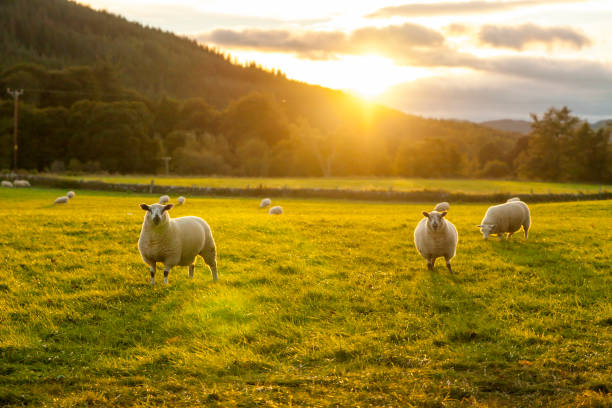Finishing Lambs on Concentrates
9 November 2022When choosing a concentrate feed for lambs aim for a feed with 15% crude protein in the fresh weight (between 14-16%). Note feed labels are generally quoted on a fresh weight basis. There are many pellets on the market, check the ingredients as there is much variation in quality. Look for a feed with a high metabolisable energy (ME) value – 12.5 ME. Many labels do not declare the ME value of feed so it worth checking this with the supplier. There is the temptation to buy on price, but this can be counterproductive. If you are making a home-made mix the energy will likely be 13 ME or above with barley as the main energy source.
One advantage of pellets is that they do not get the chance to sort the feeding like they may do with a home-made mix or a blend. Sorting can cause issues if there are feeds of different sizes and minerals are not evenly distributed, especially for lambs. Ensure the mineral is for finishing lambs and that it contains ammonium chloride (minimum level of 5000 mg/kg or 0.5% of total diet) for the prevention of urinary calculi (dangerous mineral crystals in the waterworks in male lambs).
Homemade lamb finishing mixes
With home-mixes it is important that they are adequately mixed, palatable and contain a suitable intensive lamb mineral. Prevention of urinary calculi is essential with incidence is much higher in lambs on high levels of concentrates.
Example Home Mixes:
| Kg/tonne | |||
|---|---|---|---|
| Feed | Example 1 | Example 2 | Example 3 |
| Whole Barley | 650 | 525 | 650 |
| Oats | 100 | 100 | 100 |
| Hipro Soya | - | 150 | - |
| Rapeseed Meal | 225 | - | - |
| 35% Protein Concentrate | - | - | 225 |
| Intensive Lamb Mineral | 25 | 25 | 25 |
| ME (MJ/Kg DM) | 12.5 | 12.8 | 12.2 |
| Crude Protein (% FW) | 15 | 15 | 15 |
Barley is a high energy, high starch feed and needs to be fed with care. Tips for using barley safely for lambs:
- If possible, feed barley whole – lambs can use their teeth to grind whole barley and because it is not bruised it takes longer to be digested in the rumen. If barley needs to be bruised ensure it is just a crack and not ground too finely which increases the acidosis risk.
- Ensure lambs are used to being fed, for a few weeks before introducing hoppers. If this is not possible, for example when hoppers are in fields to complement forage crops, ensure that no more than 50% of the mix is barley and that the lambs are not empty when the hoppers are introduced.
- Never let the hoppers run empty – dead lambs will follow!
- Balance the barley with protein and if possible, inclusion of a digestible fibre such as soya hulls or sugar beet pulp are ideal. Or oats as they are more fibrous and lower in starch therefore can be included at around 10%
- Treatment of barley – propcorning moist barley (whole or bruised) is safe for lambs. Urea + enzyme treatments of whole or bruised barley work well for lambs and limits the need for additional protein.
Tips for finishing lambs indoors on ad-lib concentrates
- Allow sufficient space for lambs indoors: Up to 3 months 0.5M² per lamb, 3-12 months 0.75-0.9m² per lamb
- Split lambs into batches of size/estimated finish time this makes weighing for slaughter management easier
- Good access to feed is very important 24/7
- Ensure adlib clean straw/hay
- Plenty of clean water
Sign up to the FAS newsletter
Receive updates on news, events and publications from Scotland’s Farm Advisory Service

